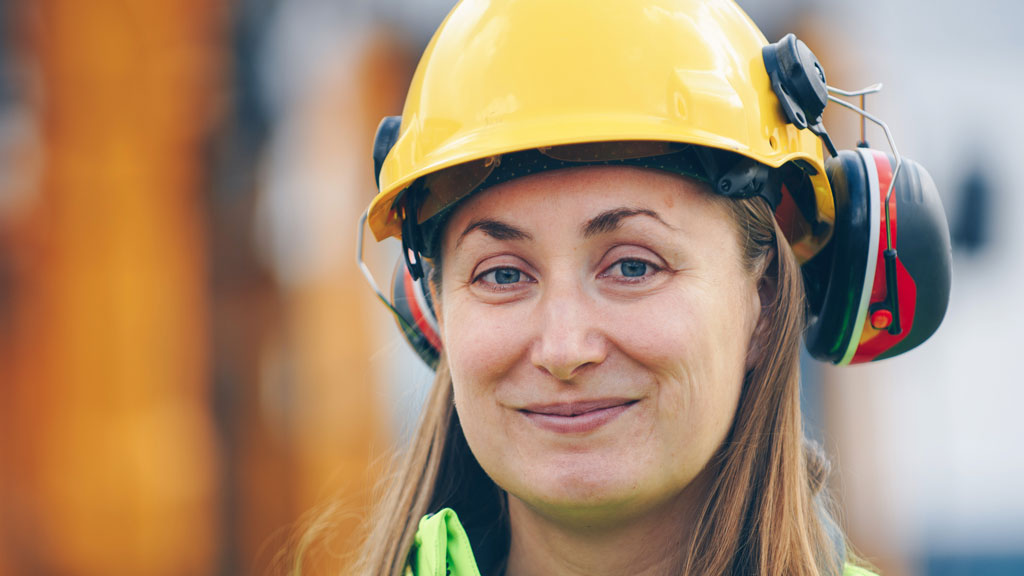Maybe, just maybe, efforts to recruit more women into the construction workforce might be paying off.
Statistics Canada Labour Force Survey (LFS) data over the past few months appear to show significant numbers of women entering the national construction workforce.
BuildForce Canada’s analysis of the June 2023 LFS data reported the number of women in the construction labour force increased by over 25,000 compared to June 2022. The male labour force increased by 15,500 workers.
That follows the LFS for May which concluded the number of females employed in construction had increased over the past 12 months from 194,300 in May 2022 (12 per cent of total industry employment) to 221,900 (14 per cent of total industry employment) in May 2023.
For March, BuildForce reported on monthly LFS data showing the number of women in the construction labour force grew by 29,600 workers year-over-year, accounting for 34 per cent of overall labour force growth.
By comparison, BuildForce senior economist Klayton Goncalves reported, women have on average accounted for 18 per cent of labour force growth in Canada’s construction industry for the last 20 years (for the month of March only).
Both Alex Carrick, chief economist at ��������Connect, and BuildForce executive director Bill Ferreira suggested the trend was positive and worth watching but the uptick could only be confirmed in analysis of year-end numbers.
Addressing the June LFS statistics, Carrick said, “If this pattern continues to hold true, it will be a cause for celebration given the upcoming demands that will be placed on the industry from a continuing strong new-housing market and mega-sized projects on the horizon in the resource area.”
“My immediate inclination would be to stay cautious, at least until there are end-of-year results.”
Ferreira explained the methodology used for the monthly LFS survey is an extrapolation of relatively small numbers which is generally valuable but does not provide a precise snapshot of workforce growth.
“I don’t want to put too much stock in it,” said Ferreira, “It’s certainly a positive trend and it does not surprise me.
“We have been seeing this as a trend over the last four years. The number of women registering in apprenticeship programs in the construction sector has been on the rise — a small rise, but it’s been on the rise.”
Ferreira attributes the strong numbers to two factors: the combined industry and government efforts to focus on recruitment and retention of women, and the launch of the Canadian Apprenticeship Service last fall.
The apprenticeship service offers incentives to employers to hire new first-year apprentices in 39 Red Seal trades.
The key, said Ferreira, is the funding — $5,000 for each eligible new first-year apprentice hired, and $10,000 if the apprentice hired is from an equity-deserving group such as women.
“What it does is it provides employers with an incentive to hire an individual and train them as a first-year apprentice. So the fact that we’re starting to see an increase in those numbers would not surprise me in any way whatsoever,” he said.
The service provides support for small employers, Ferreira said, because taking on apprentices is always challenging for them as it requires supervision from journeypersons.
It was a program delivered at the right time, Ferreira said.
The 2023 BuildForce Looking Forward study reported in 2022, there were 199,600 women employed in Canada’s construction industry, of which 27 per cent worked onsite. The remaining 73 per cent worked off site, primarily in administrative and management-related occupations.
Of the 1.16 million onsite tradespeople employed across the 34 trades and occupations tracked by BuildForce Canada, women made up five per cent.
That number has remained stubbornly low, Ferreira said, but if year-end numbers confirm the trend identified by the monthly LFS data in recent months, he speculated it could approach seven per cent of women working onsite.
“Again, it is difficult to say where we’re going to end up at the end of the year,” he said. “But it’s certainly a positive trend and one that I think the industry has been waiting for for some time.”
Follow the author on Twitter @DonWall_DCN







Recent Comments
comments for this post are closed